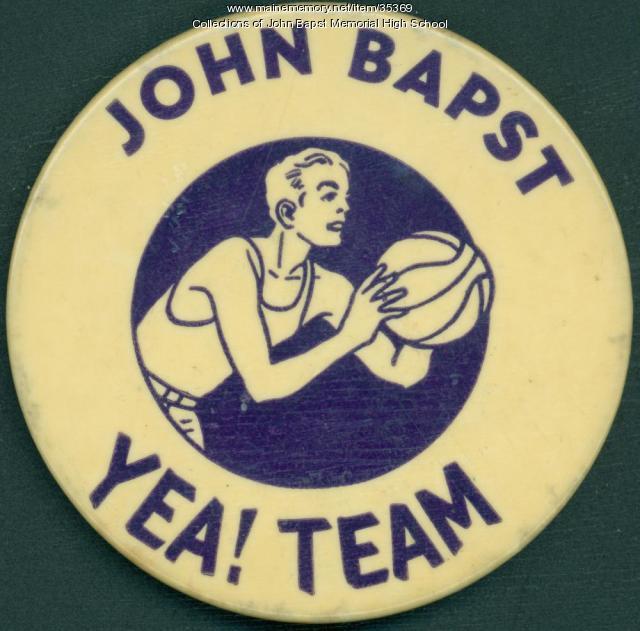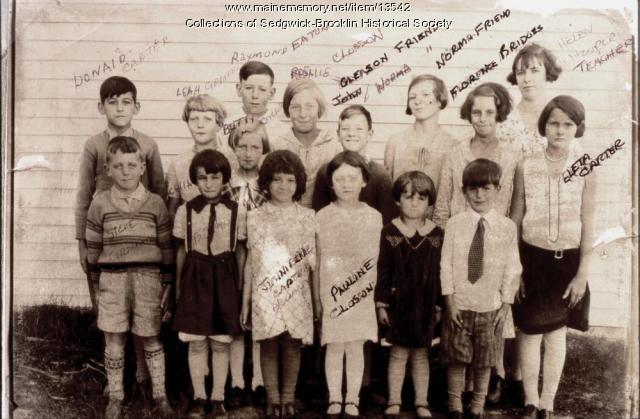Keywords: Closing
- Historical Items (693)
- Tax Records (3)
- Architecture & Landscape (7)
- Online Exhibits (134)
- Site Pages (265)
- My Maine Stories (50)
- Lesson Plans (11)
Online Exhibits
Your results include these online exhibits. You also can view all of the site's exhibits, view a timeline of selected events in Maine History, and learn how to create your own exhibit. See featured exhibits or create your own exhibit
Exhibit
The paper mill on the Penobscot River in South Brewer, which became known as Eastern Fine Paper Co., began as a sawmill in 1884 and grew over the years as an important part of the economy of the region and a large presence in the landscape. Its closing in 2005 affected more than the men and women who lost their jobs.
Exhibit
Belfast During the Civil War: The Home Front
Belfast residents responded to the Civil War by enlisting in large numbers, providing relief from the home front to soldiers, defending Maine's shoreline, and closely following the news from soldiers and from various battles.
Exhibit
John Bapst High School was dedicated in September 1928 to meet the expanding needs of Roman Catholic education in the Bangor area. The co-educational school operated until 1980, when the diocese closed it due to decreasing enrollment. Since then, it has been a private school known as John Bapst Memorial High School.
Exhibit
Independence and Challenges: The Life of Hannah Pierce
Hannah Pierce (1788-1873) of West Baldwin, who remained single, was the educated daughter of a moderately wealthy landowner and businessman. She stayed at the family farm throughout her life, operating the farm and her various investments -- always in close touch with her siblings.
Exhibit
Lt. Charles Bridges: Getting Ahead in the Army
Sgt. Charles Bridges of Co. B of the 2nd Maine Infantry was close to the end of his two years' enlistment in early 1863 when he took advantage of an opportunity for advancement by seeking and getting a commission as an officer in the 3rd Regiment U.S. Volunteers.
Exhibit
Maine Yankee Nuclear Power Plant in Wiscasset generated electricity from 1972 until 1996. Activists concerned about the plant's safety led three unsuccessful referendum campaigns in the 1980s to shut it down.
Exhibit
Music in Maine - Civil War drum, ca. 1861
"… location for the unit, helping to keep soldiers close together. Drumming at war was dangerous, because the enemy knew that without the drum…"
Exhibit
Many different types of trolley cars -- for different weather, different uses, and different locations -- were in use in Maine between 1895-1940. The "field guide" explains what each type looked like and how it was used.
Exhibit
At the heyday of trolleys in Maine, many of the trolley companies developed recreational facilities along or at the end of trolley lines as one further way to encourage ridership. The parks often had walking paths, dance pavilions, and various other entertainments. Cutting-edge technology came together with a thirst for adventure and forever changed social dynamics in the process.
Exhibit
Reading, Writing and 'Rithmetic: Brooklin Schools
When Brooklin, located on the Blue Hill Peninsula, was incorporated in 1849, there were ten school districts and nine one-room school houses. As the years went by, population changes affected the location and number of schools in the area. State requirements began to determine ways that student's education would be handled. Regardless, education of the Brooklin students always remained a high priority for the town.
Exhibit
Eternal Images: Photographing Childhood
From the earliest days of photography doting parents from across Maine sought to capture images of their young children. The studio photographs often reflect the families' images of themselves and their status or desired status.
Exhibit
Rebecca Usher: 'To Succor the Suffering Soldiers'
Rebecca Usher of Hollis was 41 and single when she joined the Union nursing service at the U.S. General Hospital at Chester, Pennsylvania. Her time there and later at City Point, Virginia, were defining experiences of her life.
Exhibit
Yarmouth's "Third Falls" provided the perfect location for papermaking -- and, soon, for producing soda pulp for making paper. At the end of the 19th century and beginning of the 20th, Yarmouth was an international leader in soda pulp production.
Exhibit
"Bull Moose has always worked closely with local musicians and venues, adding millions of dollars directly into the local music economy."
Exhibit
St-Jean-Baptiste Day -- June 24th -- in Lewiston-Auburn was a very public display of ethnic pride for nearly a century. Since about 1830, French Canadians had used St. John the Baptist's birthdate as a demonstration of French-Canadian nationalism.
Exhibit
Silk Manufacturing in Westbrook
Cultivation of silkworms and manufacture of silk thread was touted as a new agricultural boon for Maine in the early 19th century. However, only small-scale silk production followed. In 1874, the Haskell Silk Co. of Westbrook changed that, importing raw silk, and producing silk machine twist threat, then fabrics, until its demise in 1930.
Exhibit
Fashionable Maine: early twentieth century clothing
Maine residents kept pace with the dramatic shift in women’s dress that occurred during the short number of years preceding and immediately following World War I. The long restrictive skirts, stiff collars, body molding corsets and formal behavior of earlier decades quickly faded away and the new straight, dropped waist easy-to-wear clothing gave mobility and freedom of movement in tune with the young independent women of the casual, post-war jazz age generation.
Exhibit
Since the establishment of the area's first licensed hotel in 1681, Portland has had a dramatic, grand and boisterous hotel tradition. The Portland hotel industry has in many ways reflected the growth and development of the city itself. As Portland grew with greater numbers of people moving through the city or calling it home, the hotel business expanded to fit the increasing demand.
Exhibit
Jameson & Wotton Wharf, Friendship
Since 1897, the Jameson & Wotton Wharf in Friendship has been an important addition to the community on Muscongus Bay. The wharf, which is accessible at all tides, was a steamboat stop for many years, as well as important to the lobster business.
Exhibit
George W. Hinckley and Needy Boys and Girls
George W. Hinckley wanted to help needy boys. The farm, school and home he ran for nearly sixty nears near Fairfield stressed home, religion, education, discipline, industry, and recreation.
Exhibit
The novelty of organized auto racing came to Maine in 1911 with a hill-climbing event in Poland and speed racing at Old Orchard Beach. Drivers and cars came from all over New England for these events.
Exhibit
KVVTI's Gilman Street Campus, 1978-1986
The Gilman Street building began its life in 1913 as Waterville High School, but served from 1978 to 1986 as the campus of Kennebec Valley Vocational Technical Institute. The building helped the school create a sense of community and an identity.
Exhibit
Named for the two largest things in Maine at the turn of the 20th century, Mt. Katahdin and Granger of Stetson, were known as the Largest Oxen in the World. Unable to do farm work because of their size, they visited fairs and agricultural events around the Northeast.
Exhibit
The Waldo-Hancock Bridge is in the process of being dismantled after over 70 years of service. The Maine State Archives has a number of records related to the history of this famous bridge that are presented in this exhibition.
























